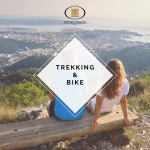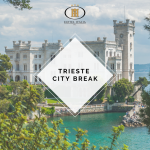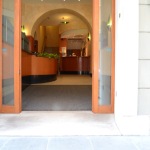The Karst
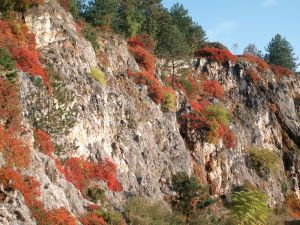
Karst rock face with thick vegetation of Somacco
The Karst Plateau is an extraordinary naturalistic area, with particular geological and flora/fauna features.
The Karst is also a wide historical-cultural area, due to the typical villages that perfectly suit the surrounding environment. For this reason, it is the ideal place for bike and trekking tourism.
The rural character of this area is well reflected in the presence of several agritourisms and ‘osmizas’. Osmizas were created during the Austro-Hungarian Empire: in 1874 the Emperor allowed the farmers to sell their wine and products for eight days a year (‘osem’ meaning ‘eight’ in Slovenian – from which the word ‘osmiza’ comes from). The directions to find the osmizas are provided by fronds hung on the nearby roads and right in front of the osmiza farmhouse. Once you are there, you will have the chance to taste and buy many local specialties.
The local inland offers high many quality products, such as wines (white wines in particular) and extra-virgin olive oil, which is greatly appreciated by cuisine experts. From the top of the Monrupino hill you can enjoy the wonderful and wide view of the Gulf of Trieste. A fortress dominates the hill – it was a relevant prehistoric fortification first, then a fortified Ancient Roman castellum and finally a fortress to protect the local people form the Turks. In 1512 a Church was built and then became a sanctuary. The place also hosts the ‘Karst Wedding’, which lasts four days in August.
Another place to be visited is, of course, the Karst House in Repen – a museum house built in the 19th Century that preserves all the architectural characteristics of the rural Karst tradition.
Grotta Gigante
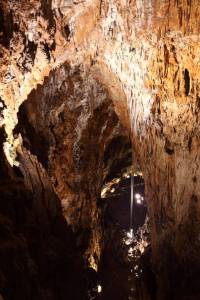
Grotta Gigante
Borgo Grotta Gigante – Sgonico TS
Tel./Fax 040 327312
The Grotta Gigante (Giant Cave) is located in Sgonico, in the outlying ward Borgo Grotta Gigante. It is an exceptional Karst phenomenon. The underground sight is really breath-taking: stalactites and stalagmites of incredible dimensions and shapes.
The central cave – which is well illuminated and can be entirely walked over – is extremely large: it is 380 metres long, 65 metres wide and 107 metres high. It is the largest cave in the world to be open to tourists, and it is so wide it could contain the Roman Basilica of Saint Peter.
At the entrance of the cave, there is a Speleological Museum, showing interesting documents on the history of Triestine speleology.
The Marine Reserve of Miramare
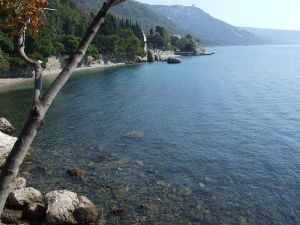
The Marine Reserve of Miramare
The Marine Reserve of Miramare, instituted in 1986, is a protected area situated at the foot of the Miramare promontory. The marine-coastal environment is rocky on the coast and gets increasingly muddier on the open sea (down to a maximum depth of 18 metres).
The Reserve can be divided into two areas, one integrally protected where it is possible to make guided scuba diving tours, the other, surrounding the first one, that is partially protected and where professional fishing is forbidden. Since it is a protected environment, it is characterised by a high level of biodiversity, an element that makes the Reserve a unique and precious environment.
Within the Reserve, activities of non-invasive research and science popularisation are promoted. The Reserve has been organising scuba diving tours for years, both for individuals and groups. Participants must have the regular scuba diving licence. Diving is possible upon authorisation, aimed at preserving the environment. However, from June to September it is also possible to go on a guided snorkelling tour: after a brief introduction at the Visitors Centre – located in the small castle within the Park of Miramare – a sea-watching activity is possible in particularly safe but interesting areas. Sea-watching is also suitable for children at least 8 years of age. In order to participate, it is necessary to contact the Reserve staff, since visits are made for groups of at least 4 people. Training courses and specialist workshops have been organised for years now. Within the Reserve, a Monitoring Group has been instituted.
Val Rosandra
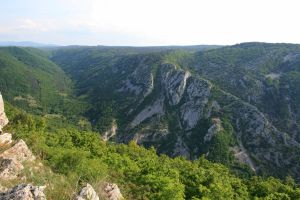
Val Rosandra
The Rosandra Valley was formed by the erosion caused by the Rosandrea steam, a fascinating, winding watercourse. It flows rapidly along steep slopes forming cascades, transparent pools and slow flows. The valley has white and imposing faces, which are very appreciated by sportsmen and climbers. Many paths pass through it; there is also an ancient Roman waterworks that was built for the water supply of the ancient Tergeste. The canal, made of stones and bricks, made Val Rosandra and Bagnoli watercourses flow together and then conveyed them to the city centre. At the end of the valley, there is a hamlet with a few houses: Bottazzo, cited in a document of the 15th Century, where it is still possible to see the remains of one of the big water mills situated along the watercourse.
Timavo river
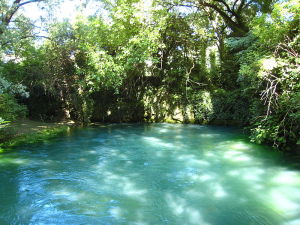
A source of the Timavo River
Next to the ancient church of San Giovanni in Tuba, in San Giovanni di Duino, there is a place that is extremely interesting from a naturalistic point of view: the resurgence of the Timavo river. This river is considered to be the shortest in Italy: after an underground course of 35 km, it re-emerges in San Giovanni (close to the sea), in a place that is so impressive, that it struck Virgil’s imagination, who cited it in his Aeneid.


